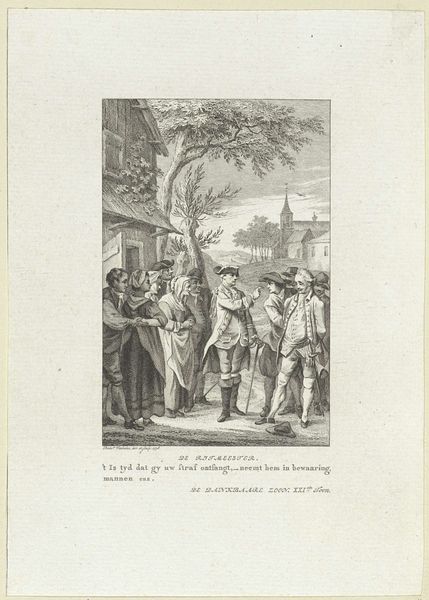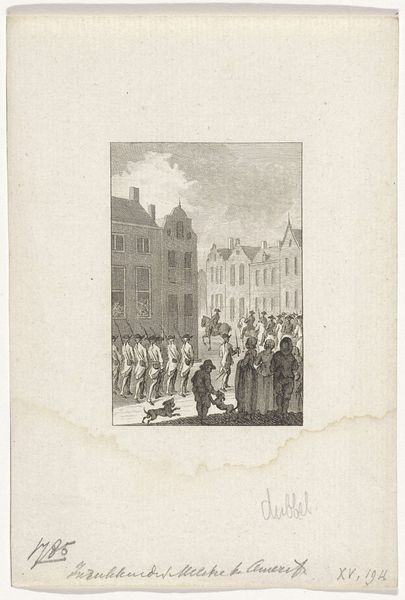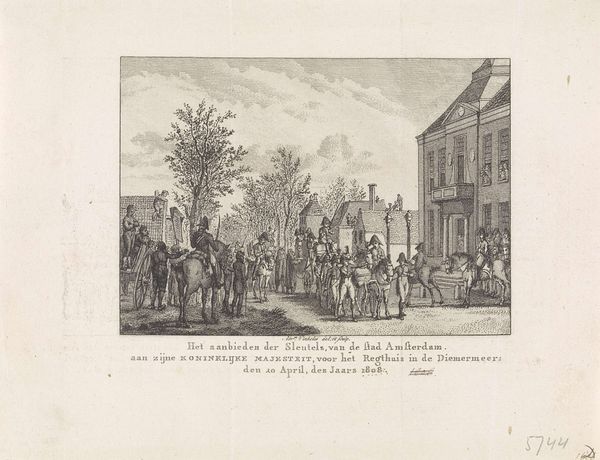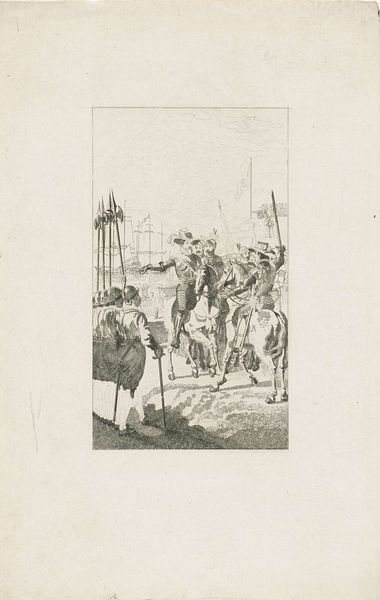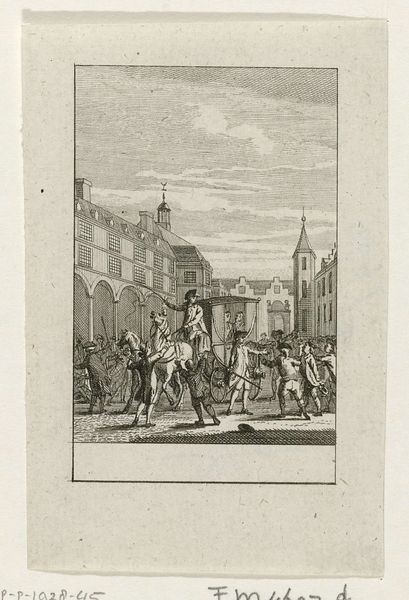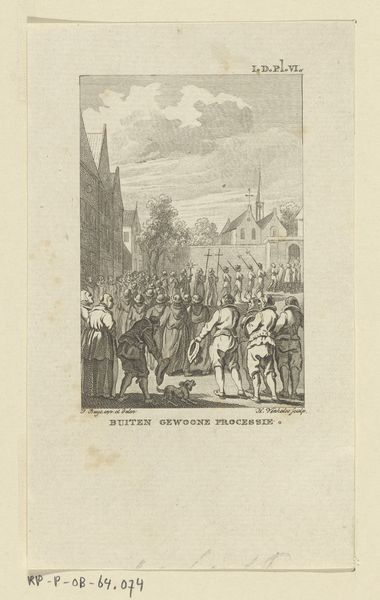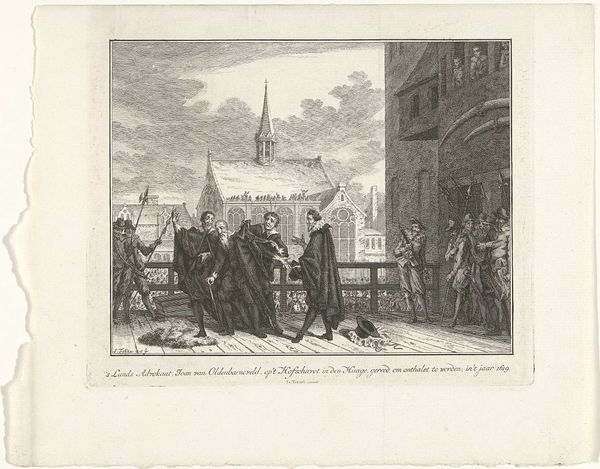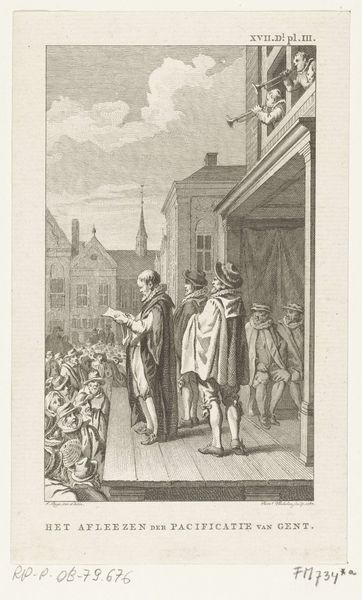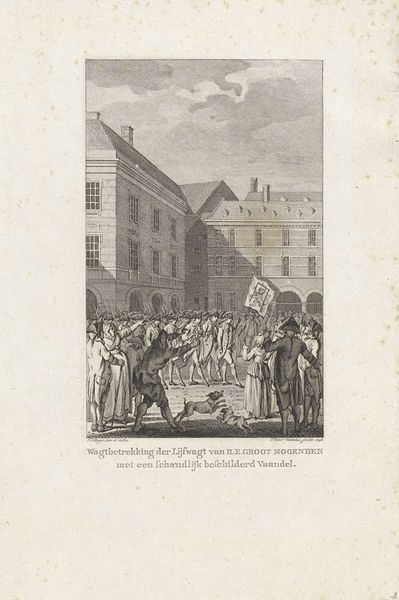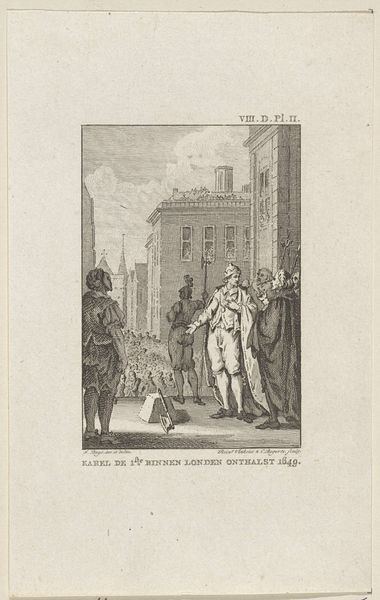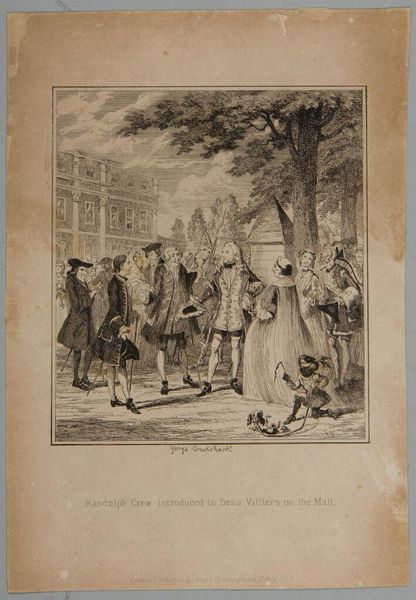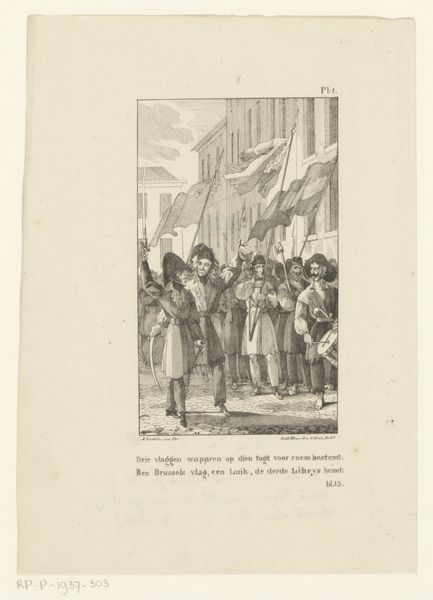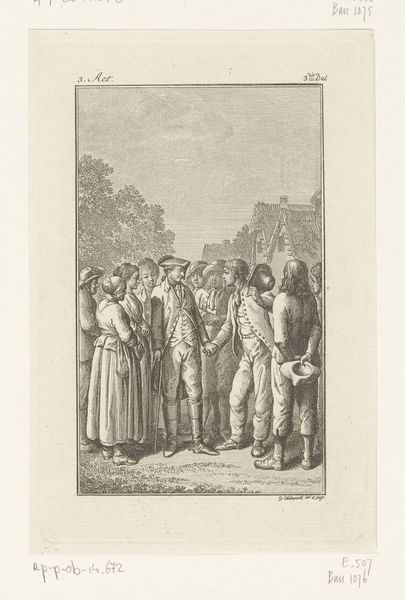
Arrestatie van drie leden van het stadsbestuur van Leeuwarden, 1796 1800 - 1801
0:00
0:00
ludwiggottliebportman
Rijksmuseum
print, engraving
#
portrait
#
neoclacissism
# print
#
old engraving style
#
history-painting
#
engraving
Dimensions: height 227 mm, width 154 mm
Copyright: Rijks Museum: Open Domain
Curator: At first glance, it looks a bit drab, doesn't it? Somber, even. It's the Arrestatie van drie leden van het stadsbestuur van Leeuwarden, 1796, an engraving created around 1800-1801 by Ludwig Gottlieb Portman. Editor: Drab? Perhaps subdued, allowing the sharp lines and stark composition to guide us. Look at how Portman contrasts the smooth, almost rounded forms of the civilians with the sharp angles of the building. There’s a deliberate visual tension there. Curator: It is deliberate, of course. Engravings like this, a relatively accessible medium, served a specific function. This wasn't about aesthetic beauty; it was about disseminating a very particular political narrative about the arrest and presumably, subsequent trial, of these magistrates. The materiality of the print facilitated that. Think of the social context—who was it for? Editor: Yes, but let's not dismiss the artistic construction. The use of hatching and cross-hatching creates depth and volume, guiding the eye toward the focal point—the armed guards escorting the arrested officials. It communicates a power dynamic, and not only political, also compositional. Curator: Absolutely. The choice to depict this event in this manner clearly serves the political purposes of the engraver and those who commissioned the piece. Neoclassicism isn't merely an aesthetic style here; it’s tied to Enlightenment ideals being questioned, challenged even. And prints like this fed that narrative. Editor: I find it striking that the artist's signature is placed so prominently. Is that to underscore the political importance you mention? Curator: Perhaps a sign of his own commitment to the event he's showing, certainly. And, a way of signaling quality within a marketplace saturated with similar, albeit less accomplished works, let's not be naive. Editor: Perhaps a mix of both then, political urgency and artistic pride. Curator: Agreed. Seeing the work through a focus on process makes it feel so different, no? Editor: Yes, considering form alone allows appreciation of the detail despite what you might call "drabness".
Comments
No comments
Be the first to comment and join the conversation on the ultimate creative platform.
